If you’re looking to add some color and life to your vegetable garden, consider incorporating flowers into the mix. Not only will they enhance the visual appeal of your garden, but they also play a crucial role in creating a diverse ecosystem. Flowers attract pollinators, which help ensure higher crop yields, and some even have pest-repellent properties to protect your vegetables from insect damage. Marigolds, for example, are a popular choice as they attract pollinators while also repelling harmful nematodes. Additionally, flowers like borage, calendula, nasturtiums, and cosmos can also benefit your vegetable garden in various ways. Whether you’re looking for trap crops, ground cover crops, or weed suppressors, there’s a flower for every purpose. So go ahead and plant some sweet peas, zinnias, cilantro, and more – your vegetable garden will thank you with a healthier and more productive harvest.
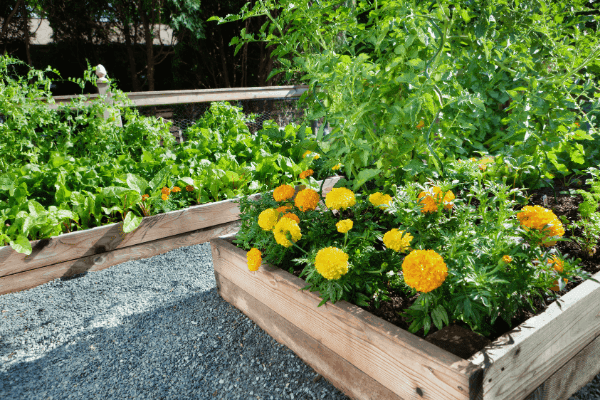
Benefits of Flowers in a Vegetable Garden
When it comes to gardening, flowers are often associated with adding beauty and color to outdoor spaces. However, incorporating flowers into a vegetable garden can offer a range of benefits beyond aesthetic appeal. Flowers can attract pollinators, act as natural pest repellents, enhance the visual appeal of the garden, and create a diverse ecosystem. Let’s explore these benefits in more detail.
Attracting Pollinators and Increasing Crop Yields
One of the main benefits of incorporating flowers into a vegetable garden is their ability to attract pollinators. Bees, butterflies, and other pollinating insects play a crucial role in the reproduction of many fruiting vegetables. When insects visit flowers to feed on nectar and pollen, they inadvertently transfer pollen from the male parts of the flower to the female parts, resulting in fruit set and higher crop yields.
Specific flowers known for their ability to attract pollinators include marigolds, borage, calendula, nasturtiums, and cosmos. These flowers produce bright, colorful blooms that are highly appealing to bees and other pollinators. By planting these flowers in close proximity to your vegetable crops, you can increase the likelihood of successful pollination and improve overall crop yields.
Natural Pest Repellent Properties
In addition to attracting pollinators, some flowers possess natural pest-repellent properties that can protect your vegetables from insect damage. Marigolds, calendula, and nasturtiums are well-known for their ability to deter pests. These flowers release certain compounds that repel harmful insects and nematodes, reducing the likelihood of infestations in your vegetable garden.
By strategically planting marigolds, for example, you can not only attract pollinators but also repel harmful nematodes. This makes marigolds a popular choice in vegetable gardens, as they offer dual benefits of attracting pollinators and protecting against pests. Incorporating these pest-repellent flowers into your garden can help reduce the need for chemical pesticides and promote a healthier, more organic gardening approach.
Enhancing Visual Appeal
Flowers have long been admired for their beauty, and when incorporated into a vegetable garden, they can significantly enhance the visual appeal of the space. While vegetables themselves may not always possess eye-catching blooms, the addition of vibrant flowers can bring a pop of color and create a visually appealing contrast.
By carefully selecting flowers that complement the colors and textures of your vegetable crops, you can create a visually stunning garden that impresses both visitors and yourself. Imagine the visual impact of a bed of bright orange marigolds alongside deep green lettuces or the delicate purples and pinks of cosmos flowers paired with the lush foliage of tomato plants. The combination of vegetables and flowers can transform your garden into a truly captivating space.
Creating a Diverse Ecosystem
When creating a vegetable garden, it’s important to aim for a diverse ecosystem that supports a wide range of plant and animal life. Flowers can play a crucial role in achieving this diversity by attracting beneficial insects, birds, and butterflies. These creatures, in turn, help to maintain a balanced ecosystem by preying on harmful pests and pollinating the flowers and vegetables in your garden.
By planting a variety of flowers, you can encourage different species of pollinators and beneficial insects to visit your garden. This diverse ecosystem can help foster a natural balance, reducing the need for chemical interventions and supporting the long-term health of your garden.
Specific Flowers for Attracting Pollinators
To attract pollinators effectively, it’s important to choose the right flowers. Certain flowers are particularly attractive to pollinators due to their colors, shapes, and nectar-producing abilities. Here are some specific flowers that are known for their ability to attract pollinators in a vegetable garden:
Marigolds
Marigolds are not only visually stunning but also highly attractive to bees and butterflies. These flowers produce bright, vibrant colors that are irresistible to pollinators. Additionally, marigolds have the added benefit of repelling harmful nematodes, making them a valuable addition to any vegetable garden.
Borage
Borage is a versatile flower that attracts a wide range of pollinators, including bees, butterflies, and hummingbirds. Its star-shaped blue or purple flowers are rich in nectar, making them a favorite among pollinating insects. Borage is also known for its culinary uses; the flowers and leaves are edible and can be used in salads or to garnish dishes.
Calendula
Calendula, also known as pot marigold, is another attractive flower for pollinators. Its vibrant orange or yellow blooms are highly appealing to bees and butterflies. Calendula is also known for its medicinal properties and can be used in natural skin care products or brewed into herbal tea.
Nasturtiums
Nasturtiums are not only visually appealing but also highly attractive to pollinators. These flowers come in a range of bright colors, including red, orange, and yellow, and their unique shape makes them irresistible to bees and butterflies. Nasturtiums are also edible, and their leaves and flowers can be used in salads or as decorative garnishes.
Cosmos
Cosmos flowers are known for their delicate, daisy-like blooms that come in a variety of colors, including pink, white, and purple. These flowers are highly attractive to bees and butterflies and can add a touch of whimsy to your vegetable garden. Cosmos flowers also have the benefit of self-seeding, meaning they may come back year after year with little effort on your part.
By planting these specific flowers in your vegetable garden, you can ensure a steady stream of pollinators that will help increase the fruit set and overall crop yields.
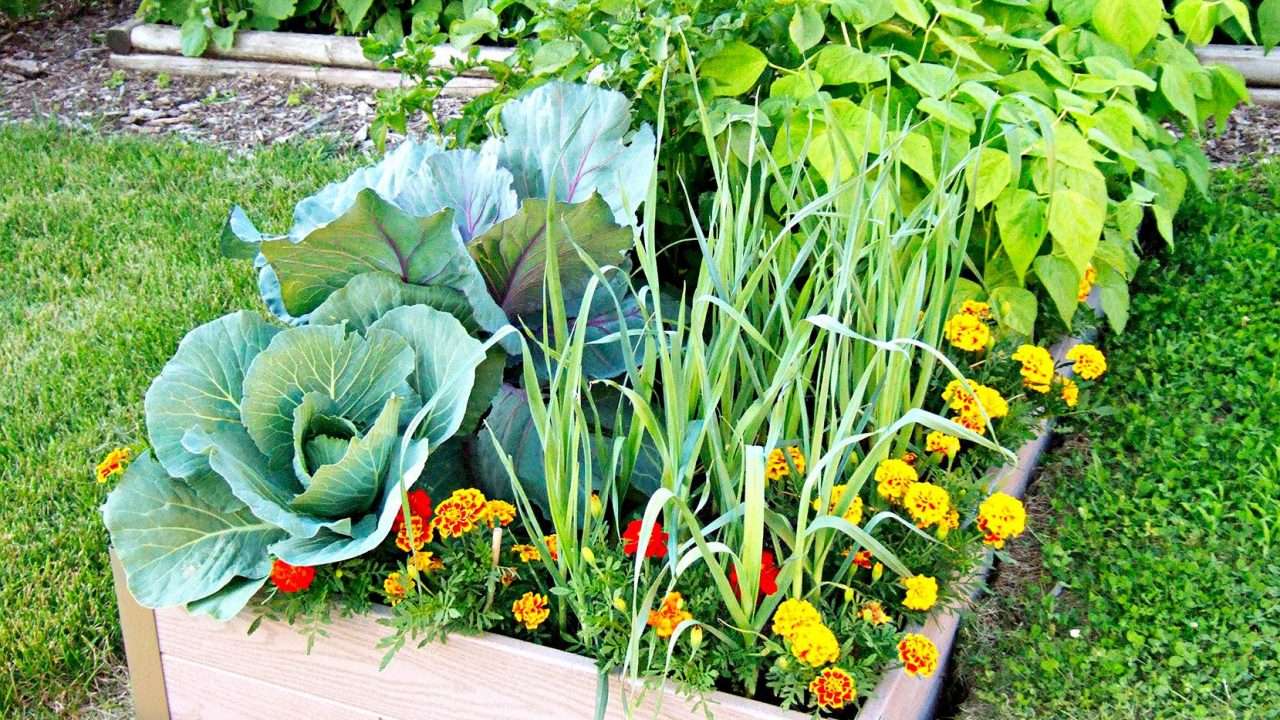
Flowers with Multiple Functions
While attracting pollinators is a significant benefit of incorporating flowers into a vegetable garden, some flowers offer multiple functions beyond their attractiveness to insects. Here are a few flowers that provide additional benefits:
Sunflowers
Sunflowers are not only stunning to look at but also serve multiple purposes in a vegetable garden. Their large, bright blooms attract pollinators, while also providing a source of edible seeds. Many gardeners enjoy harvesting sunflower seeds for snacking or to use in baking. Sunflowers are also known for their ability to break up clay soil, making them a valuable addition to gardens with heavy or compacted soil.
Lavender
Lavender is a fragrant flower that offers both aesthetic and practical benefits. Its delightful aroma enhances the sensory experience of the garden, while also attracting pollinators. In addition, lavender has natural pest-repellent properties, making it an effective deterrent for pests like mosquitoes, moths, and fleas. Lavender can also be harvested and used for culinary purposes, such as infusing into oils or baking lavender-infused treats.
Clover
Clover is a versatile plant that can serve as a living mulch in a vegetable garden. By planting clover between your vegetable rows, you can help retain soil moisture, suppress weed growth, and add nitrogen to the soil. Clover’s ability to fix nitrogen from the atmosphere and release it into the soil makes it a valuable companion plant for vegetables. Additionally, the white or pink flowers of clover are attractive to pollinators, further contributing to the overall health of the garden.
By incorporating sunflowers, lavender, clover, and other flowers with multiple functions, you can maximize the benefits of flowers in your vegetable garden.
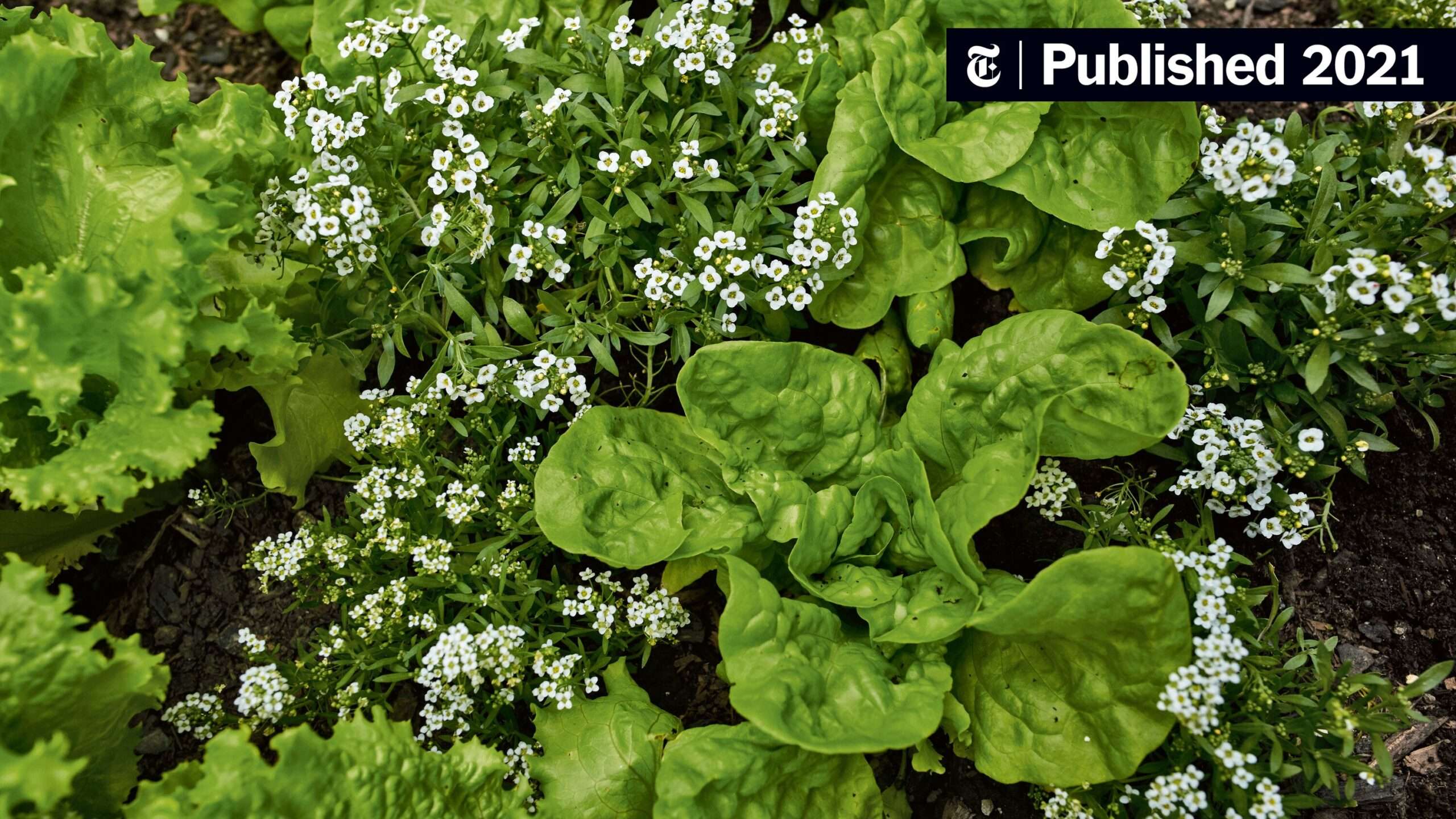
Different Uses for Flowers in a Vegetable Garden
Beyond attracting pollinators and providing visual appeal, flowers can serve various other purposes in a vegetable garden. Let’s explore some different uses for flowers:
Trap Crops
Certain flowers, known as trap crops, can be strategically planted to attract pests away from your main vegetable crops. These flowers are highly attractive to specific pests, luring them away from your desired plants and reducing the likelihood of infestation. For example, planting marigolds as a trap crop can divert harmful nematodes away from your vegetable garden, protecting your crops from their root-damaging effects.
Ground Cover Crops
Instead of using traditional mulch or cover crops, some gardeners choose to plant low-growing flowers as ground covers. These low-maintenance flowers help suppress weed growth, conserve soil moisture, and protect the soil from erosion. Examples of ground cover flowers include sweet alyssum, which forms a dense carpet of small white flowers, and creeping thyme, which releases a delightful aroma when stepped on.
Weed Suppressors
Certain flowers can help suppress weed growth and reduce competition for nutrients and space. For example, planting a dense ground cover of clover or sweet alyssum can outcompete weeds and maintain a clean and tidy garden bed. Additionally, flowers like nasturtiums produce compounds that inhibit weed germination, making them excellent choices for weed suppression in a vegetable garden.
By utilizing trap crops, ground cover crops, and weed suppressors in the form of flowers, you can maintain a healthy and weed-free vegetable garden without relying on chemical herbicides.
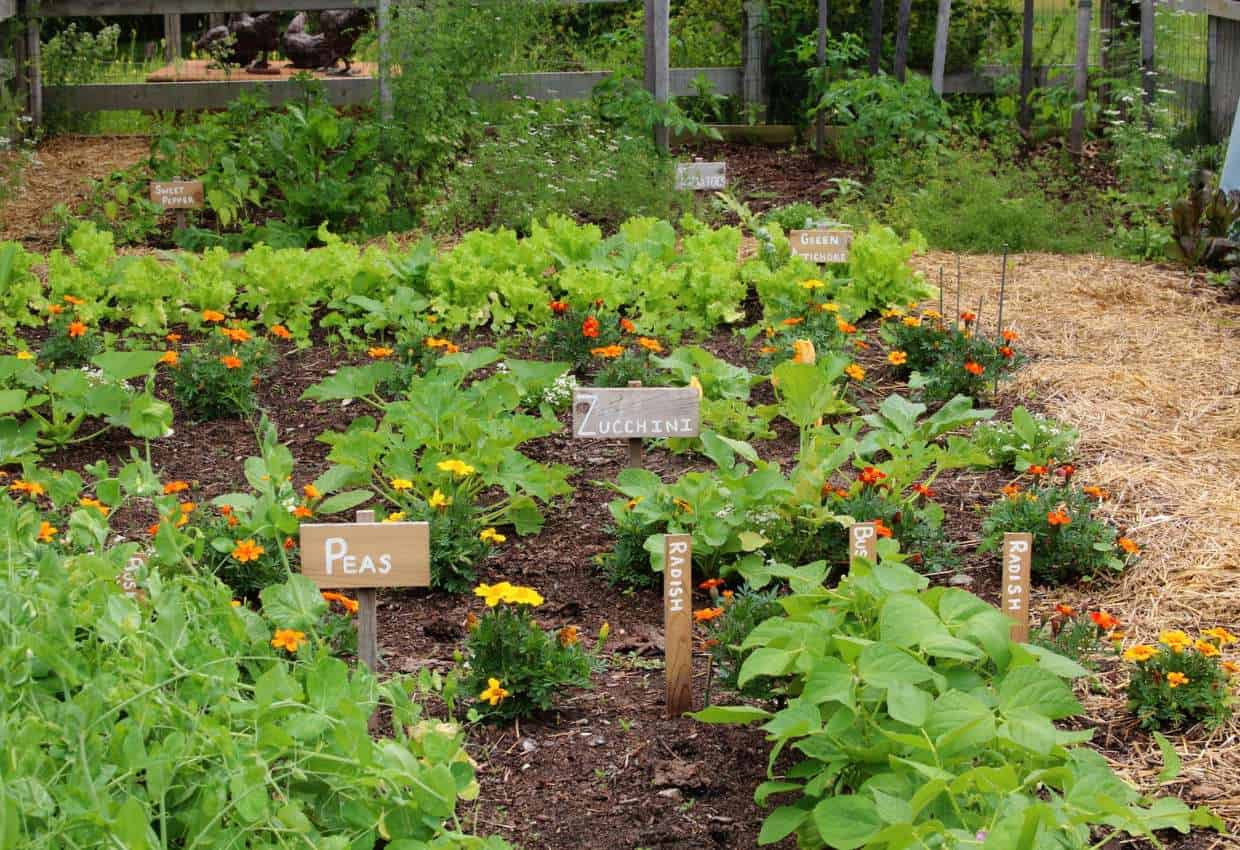
Additional Beneficial Flowers for a Vegetable Garden
In addition to the previously mentioned flowers, there are several other floral options that can bring unique benefits to your vegetable garden. Let’s explore a few more beneficial flowers:
Sweet Peas
Sweet peas are not only beautiful and fragrant, but they also attract pollinators and beneficial insects. These delicate flowers come in a range of colors, including purple, pink, and white, and their vining nature makes them great for trellising. The scent of sweet peas can also deter certain pests, making them a valuable addition to any vegetable garden.
Zinnias
Zinnias are vibrant, colorful flowers that are highly attractive to bees and butterflies. Their large, showy blooms come in a variety of colors, ranging from bright reds and oranges to soft pinks and yellows. Zinnias are easy to grow and can add a burst of color to any vegetable garden. The nectar-rich flowers provide an excellent food source for pollinators, contributing to increased pollination and higher crop yields.
Cilantro
Cilantro is a popular herb known for its culinary uses, but it also produces small white flowers that attract beneficial insects. The flowers of cilantro, which eventually turn into seeds known as coriander, are highly attractive to bees and hoverflies. By allowing cilantro to bolt and go to flower, you can provide a valuable food source for pollinators while still harvesting the leaves for culinary purposes.
Phacelia
Phacelia, also known as scorpion weed, is a flower that has gained recognition for its ability to attract pollinators and beneficial insects. The lavender-blue flowers are highly attractive to bees, hoverflies, and other beneficial insects, making phacelia an excellent addition to a vegetable garden. Phacelia also improves soil structure and fertility, making it a valuable cover crop.
Sweet Alyssum
Sweet alyssum not only serves as a ground cover crop but also attracts pollinators and beneficial insects. This low-growing flower produces clusters of small white or purple blooms that emit a sweet fragrance. By planting sweet alyssum around your vegetable crops, you can invite pollinators to the garden while also providing a visual contrast to the surrounding greenery.
Lupins
Lupins are tall, showy flowers that can add height and visual interest to a vegetable garden. These plants produce vibrant spires of flowers in shades of purple, blue, pink, and white, attracting bees and butterflies. Lupins also have a symbiotic relationship with nitrogen-fixing bacteria, enriching the soil with nitrogen and benefiting surrounding plants. The flowers can also be used for decorative purposes in flower arrangements.
Comfrey
Comfrey is a herbaceous perennial with attractive purple, pink, or white flowers that are highly attractive to bees and other pollinators. Comfrey plants have deep roots that help bring up nutrients from deeper soil layers, making those nutrients more accessible to other plants nearby. Comfrey leaves can also be used to make a nutrient-rich compost tea, which can be applied to vegetable crops as a natural fertilizer.
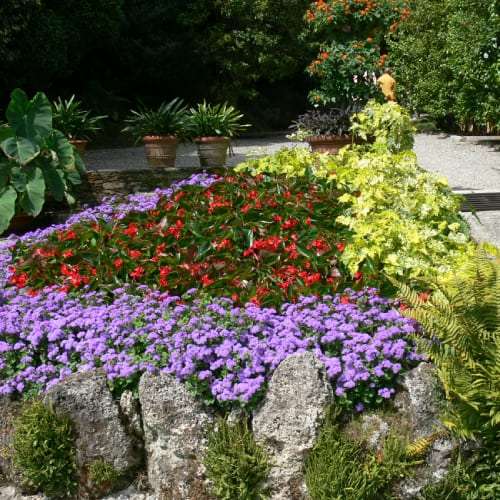
Overall Benefits of Flowers in a Vegetable Garden
In conclusion, incorporating flowers into a vegetable garden offers numerous benefits that extend far beyond their visual appeal. Flowers attract pollinators, resulting in higher crop yields and improved fruit set. Additionally, certain flowers possess natural pest-repellent properties, reducing the need for chemical pesticides. Flowers also enhance the visual appeal of the garden, creating a beautiful and captivating space. Moreover, by planting a diverse range of flowers, you can promote a balanced ecosystem and contribute to the overall health and productivity of your vegetable garden.
So, why not add a splash of color, fragrance, and biodiversity by including flowers in your vegetable garden? Whether you choose to attract pollinators, deter pests, or simply enhance the visual appeal of your space, flowers can bring numerous benefits to your gardening endeavors. With careful selection and placement, you can create a thriving and productive garden that will delight both you and nature’s little helpers.




